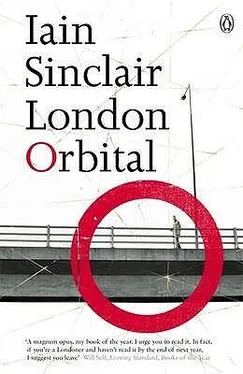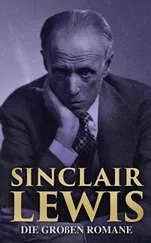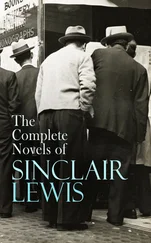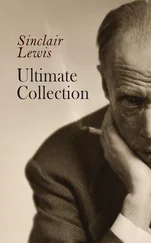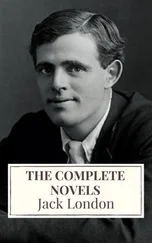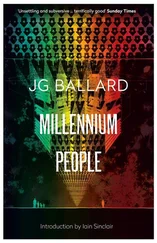One year from now, on Christmas Eve, I would return to the Dome. They’d slashed the entry price to £ 1. Tourist shops were selling off their souvenir tat at knockdown prices. I filled three Christmas stockings with Dome kitsch for less than £ 15. It was still raining. At least 101 stuffed Dalmatians were hanging by the neck from deserted sideshow booths. Coke dispensers were empty. A YEAR OF CELEBRATION: THIS MACHINE IS NOT IN SERVICE.
Time spent here shamed the visitor. I’ve never been anywhere so dispiriting. TUNNEL OF LOVE/KISS ME SUCK. Small groups, mainly Indian or Bangladeshi, ignored the barely functioning zones to asset-strip souvenir shops.
CITY OF LONDON PRESENTS: MONEY. Due to the incident which took place on Tuesday 7th November, unfortunately the Millennium Jewels Exhibit will not be open to the public until further notice. On behalf of the Dome and De Beers we apologise for any disappointment caused.
On the glistening path, where we saw the understudies make their entrance on the day before the millennial eve, I ran into the last of the celebrities: Rowan Atkinson and Tony Robinson. In the form of cardboard cut-outs. Punting a specially commissioned Blackadder ‘special’, large-screen TV to make excursionists feel at home.
Antony Gormley’s Quantum Cloud was the only object that made any attempt to address the reality of this site: metal filings (that alluded to riverside scrap yards) magicked into a man-shaped cloud. Against a grey sky. This figure, the spirit of place, evolves — as you walk, or drift with the tide. It gives form to inherited melancholy.
The Prayer Space is situated in Harrison Building opposite Millennium Jewels. Nobody is praying. The jewels had to be removed, after a bunch of South London chancers tried to ram the tent with a JCB. An operation sold to the cops from the start. The only high attendance day at the Dome — busybusy crowds mugging like crazy — came when plainclothes police were dressed as tourists and workmen, while they waited for the bandits to make their move.
It would get worse. Government (and the usual quangos) hoped we’d forget about the Dome — until the developers arrived. By November 2001, the deserted and unloved site was haemorrhaging an estimated £ 240,000 a month. In that year, statisticians reckoned, £ 21.5 million had gone down the tubes: on a skeleton maintenance staff and all those empty car parks. Even in the Bad News flood around 11 September, nobody could devise an ‘on message’ boost for the Teflon marquee.
Lord Falconer, invisible minder, unenthusiastic scapegoat, kept his own council. Could anything be done? Rumour spoke of the strategy employed on other burnt-out industrial spaces, the conversion of the tent into a club, a rave facility. Send for naughty Dave Courtney. Or perhaps a theme park? An ice rink? A medical charity, the Wellcome Trust, expressed an interest. As did the Meridian Delta consortium. Marc Atkins might well be prepared to stage a major photographic retrospective. Graveyards, reforgotten authors, nudes and obelisks.
The Arthur Daleys of New Labour intended one thing, as had been obvious from the start: a sell-out. Three hundred acres of Greenwich peninsula real estate, cleaned up with lottery funds, brownfield recovery grants and the rest, available for development. New housing. Chafford Hundred comes to town. With multiplex and the eco-friendly Sainsbury’s on its doorstep.
One more drink. A last look through the binoculars. They switch the illuminations on and off. Everything checked. Nothing can go wrong — can it? Will Self, a fan of the M25, said that the mistake with the Dome was that it played safe. It was too modest. It should have spread itself to envelop the whole of London, right out to the motorway. An invisible membrane. A city of zones and freak shows separated from the rest of England. Ford Madox Ford’s old fantasy finally activated.
We couldn’t get drunk, but we were very mellow. Boneless. It took a long time to hft a glass. Anna had driven us through the Blackwall Tunnel at the start of all this and she was there for the last rites. We hadn’t walked around the perimeter of London, we had circumnavigated the Dome. At a safe distance. Away from its poisoned heritage. Its bad will, mendacity. The tent could consider itself exorcised. This was a rare quest for me, one that reached a fitting conclusion. Here at last was the grail. Up-ended on a swamp in East London. Glowing in the dark.
To Renchi Bicknell for his company on the walk around the M25; for his sketches, speculations, enthusiasm. To Kevin Jackson for a steady dripfeed of information, asides, bibliographic offprints. And to the hardy occasional, Marc Atkins, Bill Drummond, Chris Petit.
With thanks to those who took part in the secondary expeditions: Ivan Bicknell, Peter Carpenter (Epsom guide and William Curtis Hayward informant), Chris Darke, Jock McFayden, Lawrence Peskett, Anna Sinclair (and for those early-morning drives), Will Sinclair, Martin J. Wallen.
Material on the history, fabric and mythology of the M25 was supplied by John Sergeant. Pinky Ghundale’s good cheer and efficiency made the impossible possible. Thanks to Keith Griffiths for fronting a post-posthumous film on motorway reverie (the tape beyond ‘the final commission’).
For generously giving time for interviews, thanks to: J.G. Ballard, Dr J.C. Burne, Ken Campbell, Cicely Hadman, Ros Hadman, Jerry Jones, Rachel Lichtenstein, Bernard O’Mahoney, Beth Pedder, Tony Sangwine, John Whomes.
And thanks for gifts and deeds too numerous to specify to: Sara Allen, Julian Bell, Neil Belton, Vanessa Bicknell, Paul Burwell, Brian Catling, Miranda Collinge, Gini Dearden, Paul Devereux, Andrew Aidan Dun, Gareth Evans, Bruce Gilbert, Mike Goldmark, Jane Greenwood, Bill Griffiths, Brian Hinton, Susie Honeyman, Patrick Keiller, Dave McKean, Emma Matthews, Michael Moorcock, Alan Moore, Chris and Haya Oakley, Effie Paleologou, John Richard Parker, John Procter, Joe Rosen, Robin Summers, Jonathan Thomson, Liat Uziyel, Claire Walsh, Patrick Wright.
Extracts from this book, in an earlier form, were published in the London Review of Books, The London Magazine and The River. A short section appears, courtesy of Michael Moorcock, on the website ‘Fantastic Metropolis’ and can be found on www.fantasticmetropolis.com.
Extended riffs on themes touched on in London Orbital were rehearsed in a sequence of books published in 1999. I think of these books as missing chapters of a larger whole, outstations.
(1) Sorry Meniscus (Excursions to the Millennium Dome) . Profile Books. (Expeditions to the building site on Bugsby’s Marshes.) (2) Crash (David Cronenberg’s Post-mortem on J.G. Ballard’s ‘Trajectory of Fate’) . British Film Institute. (Interview with Ballard, road speculations.) (3) Rodinsky’s Room . Granta. (An investigation carried out by Rachel Lichtenstein into the life and mythology of David Rodinsky.) (4) Dark Lanthorns (David Rodinsky as Psychogeographer). Goldmark, Uppingham.
Patrick Abercrombie and J.H. Forshaw, County of London Plan, London, 1943
William Addison, Epping Forest (Its Literary and Historical Associations) , London, 1945
J.G. Ballard, The Atrocity Exhibition, London, 1969
______ Vermilion Sands, London, 1973
______ Crash, London, 1973
______ Running Wild, London, 1988
Griselda Barton and Michael Tong, Underriver (Samuel Palmer’s Golden Valley), Westerham, 1995
Neil Belton, The Good Listener (Helen Bamber: A Life against Cruelty) , London, 1998
Читать дальше
